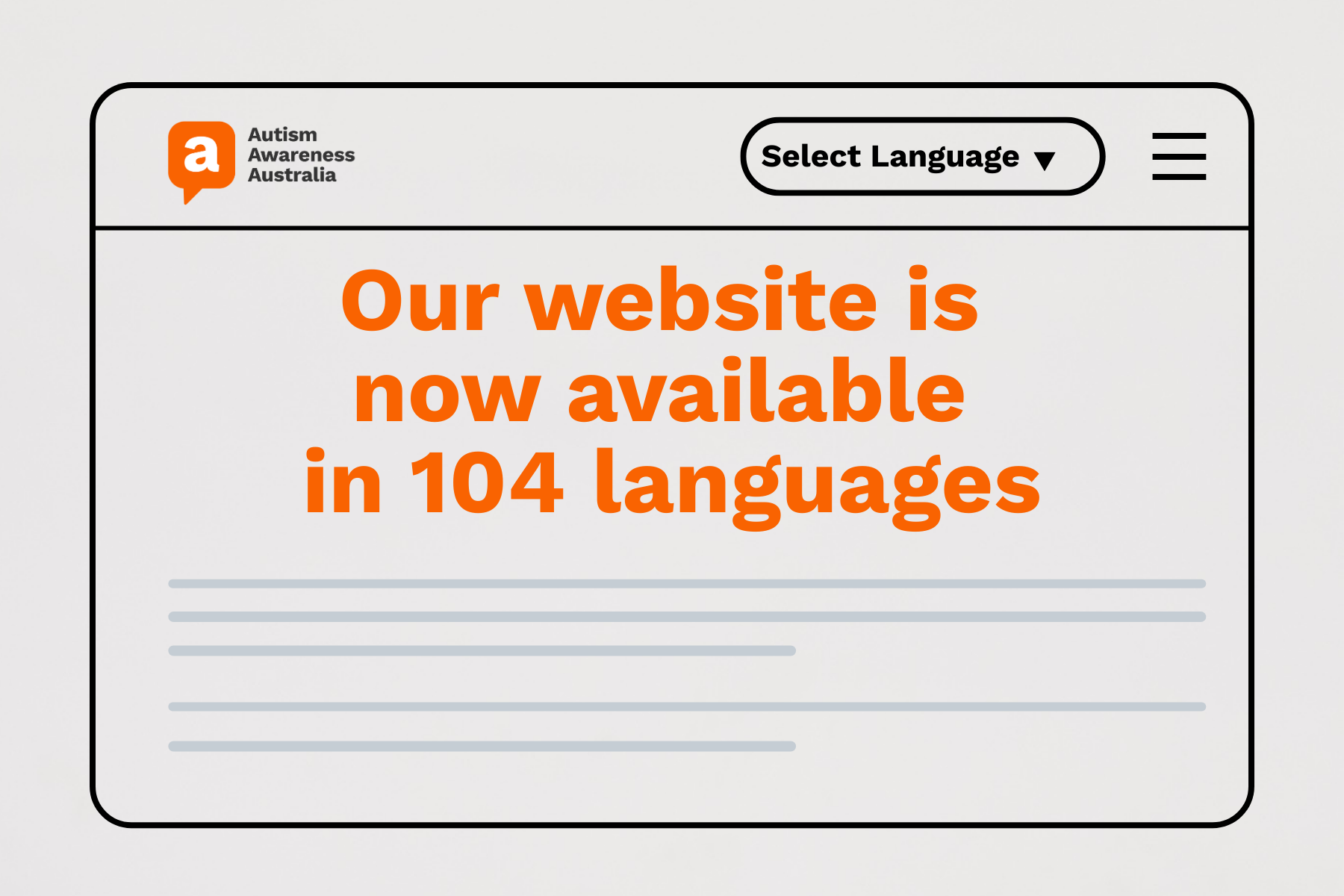The power of play-based learning for autistic children

Play is fundamental for all children's learning, development and wellbeing, regardless of background or ability.
But for autistic children, play and play-based learning can be an effective and engaging way of teaching new skills and fostering confidence and crucial feelings of acceptance and belonging.
In this post, we’ll discuss what makes play-based learning so effective for children with autism, and how modelling skills and behaviours during play can assist autistic children in their learning. We’ll also share how an individual activity learning plan can foster supportive play for children on the autism spectrum and what early childhood educators can do if an approach to play-based learning isn’t working.
- What is play-based learning?
- How modelling helps autistic children
- Creating an individual activity learning plan
- What if nothing is working?
- Your next steps
What is play-based learning?
Play forms the core of young children's growth and development, and is perhaps the most effective teaching tool at an early educator’s disposal. Play not only provides enjoyment for children, but also builds important life skills such as creativity, imagination, and curiosity about the world and the people around us. Through play with their peers, families and educators, as well as playing by themselves, children learn valuable skills and life lessons and challenge their perspectives in a safe and supportive way.
Play-based learning is most successful when it incorporates a few key factors. Incorporating a child’s special interests while reflecting on their strengths and abilities encourages them to build skills and ideas in a way that interests and excites them. During play-based learning activities, children should also be encouraged to ask questions, think critically, collaborate with others and build their resilience.
To be successful, play-based learning must ultimately be child-led and educator-supported. It should incorporate a child’s interests while reflecting their strengths and abilities and encourage them to build skills and ideas to foster lifelong learning and participation in the world around them.
How modelling helps autistic children
Another technique many early childhood educators use is modelling, often without realising it. By providing a visual guide for how to play, engage or perform a skill, educators can support children with their learning in an engaging way, particularly those children on the autism spectrum.
Modelling should always reflect the strengths, abilities, and support needs of an autistic child, ensuring that the skills, behaviours, and activities being modelled align with their learning and developmental goals. It doesn’t have to be a formal process - there are plenty of ways to make it engaging while incorporating it into everyday routines. Referring to the child’s needs and goals as outlined by their early educators, family and any allied health professionals supporting them is key.
It’s important to remember that modelling isn’t forcing or demanding a child to play or engage in a specific way; rather, it aims to assist children struggling with a skill or task to build their confidence and independence. Ultimately, children should be encouraged to play, engage, learn and regulate in a way that makes them feel comfortable, as long as their peers and educators remain safe in the process.
There are a few strategies educators can use to make modelling more engaging. Incorporating a child’s special interests is a fantastic means of encouraging children to participate and feel included in learning activities. For example, educators could model turn-taking by encouraging a child who loves dinosaurs to take turns holding their favourite dinosaur toy with their peers. Involving all the senses and prioritising ‘people games’ that don’t involve toys, such as hide and seek, tag or nursery rhymes, are other engaging forms of modelling.
When modelling, instant success or improvement should never be expected. The focus must remain on guiding and supporting children without pressure, allowing them to learn, practise and grow at their own pace.
Creating an individual activity learning plan
Understanding the needs of young children as individuals is crucial for delivering meaningful early learning experiences. By reflecting on a child’s strengths, interests and support needs, educators can ensure programs, activities and environments are accessible and engaging for children of all abilities.
For this reason, children with autism benefit hugely from individual learning plans. These plans tailor learning experiences to the child’s needs, interests and goals. It’s crucial that these plans are created in collaboration with a child’s family and therapy team, ensuring the accommodations decided upon reflect everyone’s needs and wishes for the child.
A successful individual activity learning plan will include practical strategies with proven success in assisting an autistic child with their learning. These strategies should also be applicable across a variety of settings, and easy for educators of all levels and backgrounds to implement, particularly any educators who are new to the centre or working with the child. These plans also should take a positive and strength-based approach to what the child is already capable of and is working towards achieving.
With the many different inputs into these plans, it can be difficult for educators to know what to lead with when it’s time to put the plan into action. Ultimately, the first priority should always be what the child responds well to. By starting with what the child enjoys and finds interesting, the plan is much more likely to be effective.
Once an individual activity learning plan has been created, it’s time to implement it in day-to-day learning. From sensory and environmental adaptations to smaller group sizes, making accommodations so an autistic child can be included in learning activities is a great start. Observing what the child enjoys and responds to, and making observations of these, will help an activity plan continue to be adjusted to meet a child’s needs, ensuring they are encouraged to reach their full potential.
What if nothing is working?
Sometimes, despite our best efforts, play-based learning might not assist an autistic child with their learning and development. This can be disheartening for educators, as so much time and effort is spent crafting experiences, plans and procedures to support a child.
However, just because the current approach taken to support an autistic child isn’t working, that doesn’t mean the child can’t be supported. It’s rare that the first approach taken to support a child with autism will be instantly effective; it usually requires constant modifications to meet a child’s changing needs, preferences and goals. A flexible approach to supporting an autistic child coupled with patience and creativity is vital.
When first observing that an approach to support a child with autism is not working, educators should consult other people involved with the child’s learning and wellbeing. Consulting with other educators and the child’s family and therapy team (where applicable) can help bring crucial insights to the forefront. By sharing and listening to observations about the child’s needs, progress and behaviour, educators can gain new perspectives on a situation and begin to adapt their approach.
Taking a step back to identify what the child enjoys and responds well to can help educators shift their approach. Letting the child lead is often a much faster and more effective way to engage them in their learning. Rather than becoming overwhelmed by large goals, educators should focus on smaller and simpler goals, boosting both their self-esteem and that of the autistic child.
Considering accommodations that need to be made to programs, procedures and environments that haven’t been made already is also important. Sensory adaptations, for example, can be instrumental in assisting autistic children to self-regulate and remain active participants in their learning.
Finally, it’s important that educators aren’t too hard on themselves when revisiting and adapting their approach to improve child outcomes. Taking a step back and a little break when things become overwhelming can help educators navigate difficult moments. Focus on what has already been achieved with the child, and how this relates to their broader goals, and go from there.
Understanding sensory sensitivities and how they can impact autistic children is crucial for crafting a successful individual activity learning plan. ‘Navigating Autism: The Early Years’ guides early childhood educators with free, evidence-based information about autism and supporting autistic children. Learn more here.
Your next steps
Adapting play-based learning for autistic children requires flexibility, creatively and a fair amount of resilience. Most importantly, it’s not something educators should be expected to do in isolation. By collaborating with other educators, the child’s family, their therapy team, and focusing on what the child enjoys, educators can foster an engaging learning environment for autistic children that celebrates their strengths and encourages them to achieve their goals.
‘Navigating Autism: The Early Years’ provides free and evidence-based guidance to educators looking to harness the power of play-based learning when supporting autistic children. A free online course made in collaboration with industry-leading educators and clinicians, this program is made by and for early educators at every age, stage and in every setting. It covers everything an educator wants and needs to know in short videos alongside downloadable resources you can display in your room or distribute in your centre. From autism-specific information to ways to prioritise your own well-being, this course contains a wealth of information accessible anytime, anywhere. Best of all, it’s designed for self-directed learning, so you can complete each module whenever and however you like!
To learn more about the course and enrol for free, tap on the button below.






